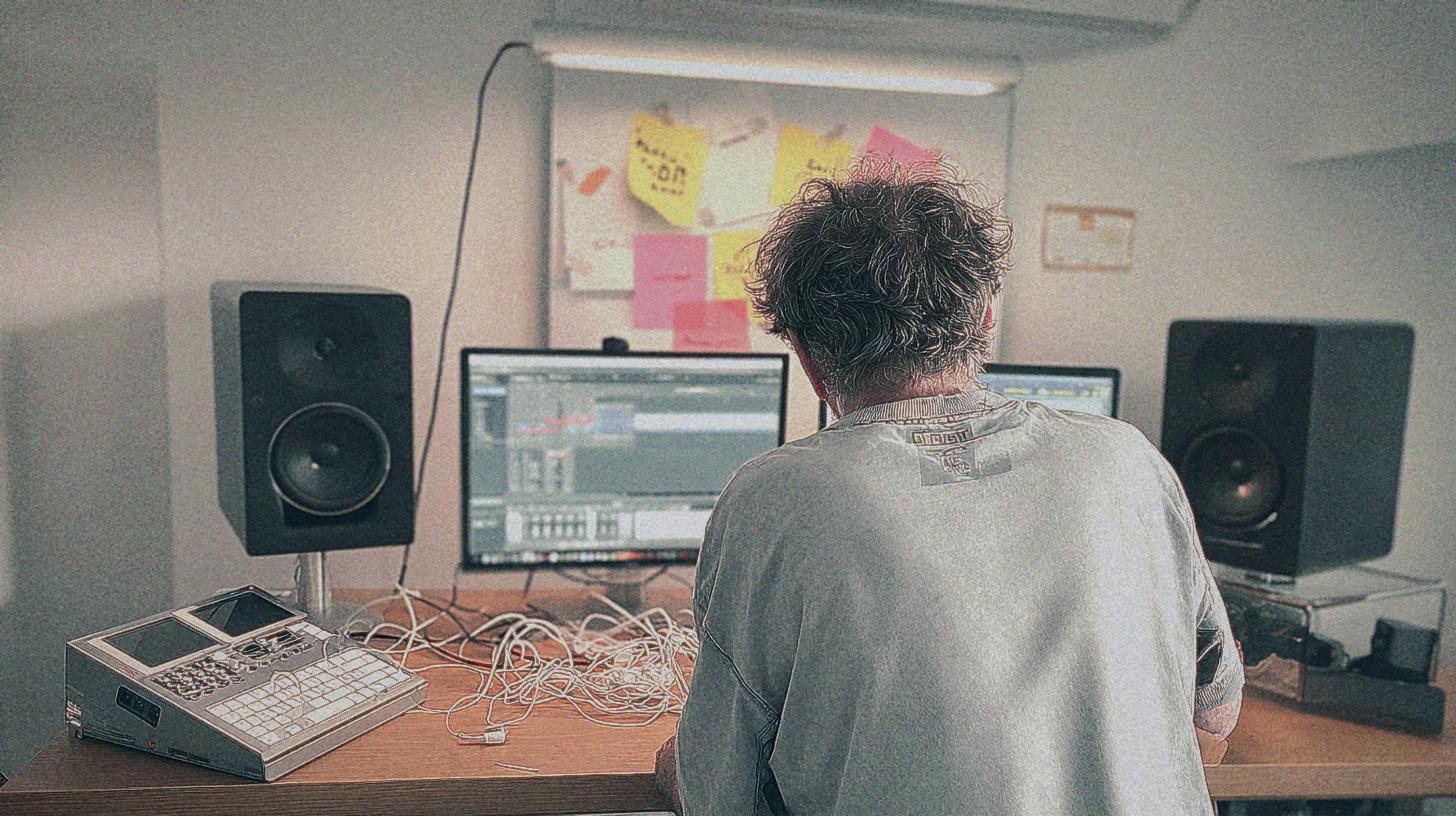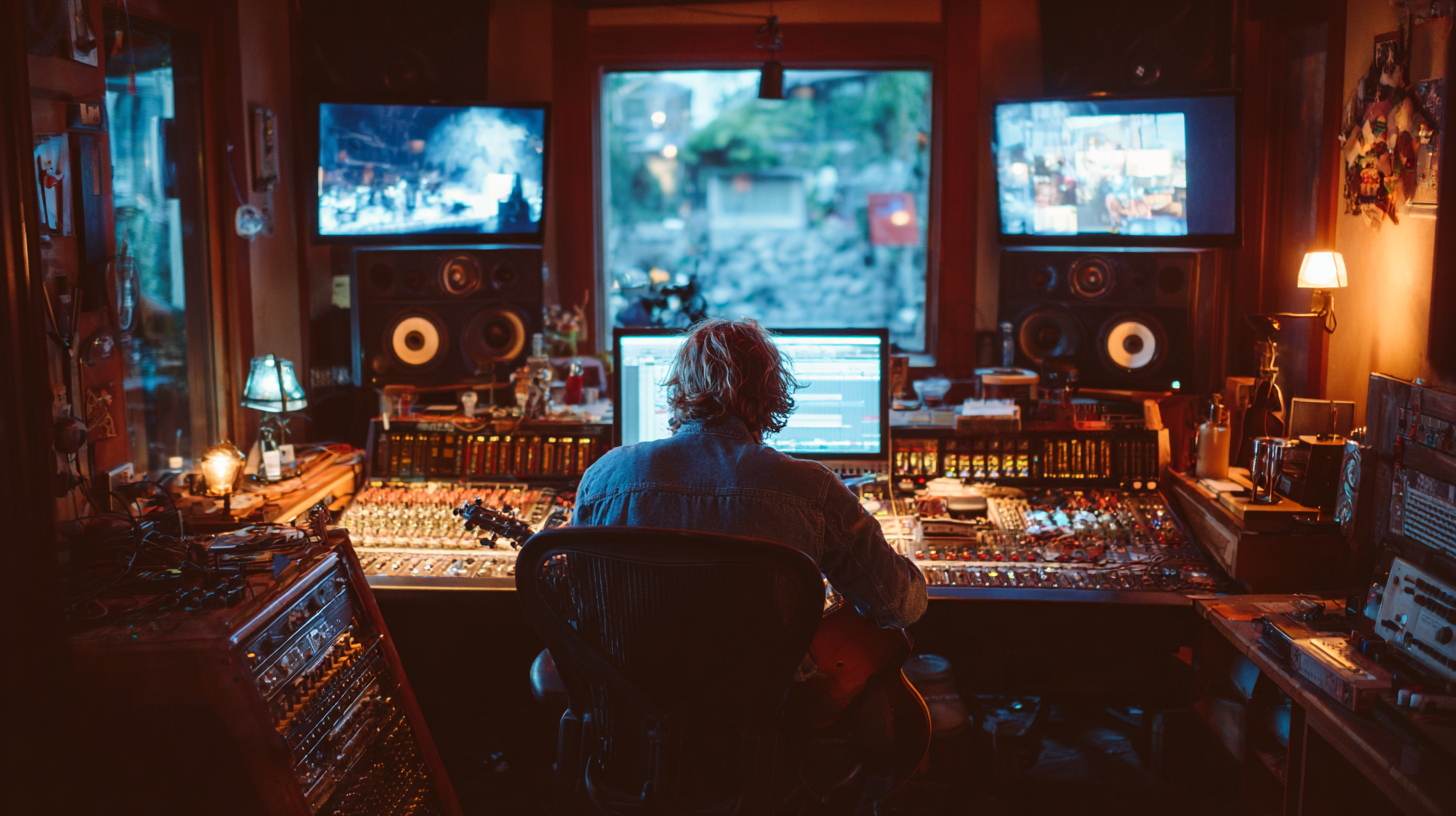
Acoustic Guitar EQ: Making it Cut Through a Metal Mix
Nail The Mix Staff
Acoustic guitars in a metal track are a serious power move. Think about the iconic intros from Metallica or Opeth, or the intricate layered textures in a modern Periphery or TesseracT song. They provide contrast, dynamics, and a whole different kind of heavy.
But let’s be real: getting an acoustic to sit right in a dense wall of downtuned 8-strings, pounding drums, and screaming vocals is a challenge. It can easily sound thin, get buried, or worse, turn into a muddy mess that just clutters up the low-mids.
The secret isn’t just turning it up. It’s all about smart and sometimes aggressive acoustic guitar EQ. Forget the gentle, folksy approach. We’re talking about carving out a space for that acoustic so it has impact and clarity, even when the mix gets brutal. Let’s break down how to do it.
The Foundation: EQ Starts Before the Plugin
Your EQ job becomes a thousand times easier if you get a good sound at the source. Don’t just throw a mic up and hope for the best. Many of the same principles for recording metal guitar apply here: thinking about the tone you want from the start will save you from fighting a bad recording later.
Mic Choice and Placement Is Your First EQ Move
The mic you choose and where you put it fundamentally shapes the frequency response of your recording.
- The Mics: Small-diaphragm condensers (SDCs) are usually the go-to. A pair of Shure SM81s, Rode NT5s, or the classic Neumann KM 184 will capture the crisp detail and transient attack you need to cut through a mix. If you want more body, a large-diaphragm condenser (LDC) like an AKG C414 or even an affordable Rode NT1 can work great, but be more mindful of capturing excessive low-end boom.
- The Placement: Pointing a single mic at the 12th-14th fret is the classic starting point. It gives you a solid balance of body and string definition.
- Need more attack? Move the mic slightly closer to the bridge.
- Need more body? Move it closer to the soundhole (but be careful—directly in front of the soundhole is usually instant mud).
- The DI Problem: If you’re stuck with just a direct input (DI) signal from a piezo pickup, you’re going to have to fight that plasticky, harsh “quack.” The best solution is to blend a DI signal with a microphone signal to get the best of both worlds: the direct punch of the DI and the natural air of the mic. If you do this, just make sure you check for and correct any phase issues to avoid a thin, hollow sound.
The Cleanup Crew: Subtractive EQ First
Before you start boosting anything, you have to clean up the garbage. The goal here is to remove all the problematic frequencies that will clash with the bass, electric guitars, and kick drum. Get surgical.
Taming the Boom and Mud
This is non-negotiable.
- High-Pass Filter (HPF): The most important move you’ll make. Your high-pass filter is the primary tool for removing all the low-end rumble that does nothing but compete with your bass and kick. Slap an EQ plugin like the FabFilter Pro-Q 3 on your track and slowly sweep it up from around 80Hz. In a dense metal mix, you can often push this up to 150Hz or even higher without the acoustic sounding too thin.
- Cutting Boxiness: Next, hunt for the mud. There’s almost always a gross buildup somewhere between 250Hz and 500Hz that makes the acoustic sound boxy or cheap. Use a narrow Q (bandwidth) on your parametric EQ, boost it significantly, and sweep around until you find the frequency that sounds the worst. Then, cut it. Don’t be afraid to pull it down by 3-6dB or more.
Killing the Piezo Quack
If you’re using a DI track, you’ll have a fight on your hands in the midrange. That signature piezo harshness usually lives somewhere between 1kHz and 3kHz. A static cut can work, but it can also make the guitar sound hollow.
A better tool for the job is a dynamic EQ like the Waves F6 or the free TDR Nova. Set a band in that harsh 1-3kHz range so that it only cuts when the guitar plays loud, taming the quack on the attacks without gutting your tone the rest of the time.
Shaping the Tone: Creative and Additive EQ
Once the track is clean, you can start enhancing what’s left to make it fit the vibe of the song. This is where you decide if the acoustic is meant to be an atmospheric layer or an aggressive, in-your-face element.
Adding Sparkle and Air
To help the acoustic slice through the wash of cymbals and high-gain fizz, you need some top-end.
Use a high-shelf boost starting anywhere from 8kHz to 12kHz. This adds that expensive-sounding "air" and clarity. Plugins like the famous Maag EQ4 are legendary for their "Air Band" for a reason—it can add beautiful, smooth brightness without getting harsh. This simple move can be the difference between an acoustic getting lost and it providing a beautiful, crystalline texture on top of the mix.
The Mid-Range: Scoop or Push?
This is where you make a critical decision based on the acoustic's role.
- The Mid-Scoop Approach: If your acoustic is a textural element layered underneath heavy guitars, you need to get it out of the way. Carve out a wide, gentle scoop in the midrange (anywhere from 400Hz to 2kHz) to make a huge pocket for the vocals and electric guitars to live in. This is a classic move to make things sound big without creating a frequency traffic jam.
- The Presence Push Approach: If the acoustic is the main event—like in an intro or a clean bridge—you need it to be forward and aggressive. Instead of scooping, find the frequencies that emphasize the pick attack and string definition. A broad boost between 2kHz and 5kHz can bring the acoustic right to the front of the speakers, giving it a percussive, driving quality that demands attention.
Context is Everything: Final EQ in the Mix
You can’t EQ an instrument in solo and expect it to work in a 100-track session. Always make your final EQ decisions with the full mix playing.
Carving Space for Everything Else
Listen to your acoustic alongside the heavy guitars. Where do the electrics have their energy? If they’re super dense at 3kHz, maybe your acoustic’s presence boost should be at 5kHz instead. If the bass guitar has a ton of info at 200Hz, be careful with any low-mid boosts on your acoustic. It’s a game of give and take, and learning how to balance guitars and bass is essential to making everything fit. For a deeper dive into making instruments fit together, check out our guide on EQ strategies for mixing modern metal.
Don't Forget Compression
EQ and compression are best friends. Your EQ decisions will change how a compressor reacts, and a compressor will change the tonal balance of your guitar. A common workflow is to use subtractive EQ first, then compression to control dynamics, then another EQ to shape the final tone. A compressor can bring out more body or attack, which you might then want to enhance or tame with that second EQ. Getting this interaction right is key, and it’s one of the most important metal compression secrets.

100+ Insanely Detailed Mixing Tutorials
We leave absolutely nothing out, showing you every single step
Making It Sound Pro: The Final Polish
Want to take your acoustic tone from good to great? Try adding some subtle processing after your main EQ moves.
- Subtle Saturation: Run your acoustic through a tape or tube saturation plugin like the Soundtoys Decapitator or Slate Digital Virtual Tape Machines on a very light setting. This adds subtle harmonic distortion via a process called audio saturation, which makes the sound richer and helps it translate better on smaller speakers, all without just adding volume.
- EQ Your Effects: Don’t just send your beautifully EQ’d acoustic to a generic, boomy reverb. Even the best reverb plugins need to be sculpted to fit the mix. Put an EQ on the reverb return itself. High-pass it aggressively (up to 400-500Hz) and low-pass it (around 8-10kHz) to create a space that has atmosphere without adding any mud or harshness to your mix.
These techniques are the building blocks the pros use to fit acoustic guitars into some of the heaviest mixes on the planet. Applying them will instantly level up your productions.
But imagine watching the actual producer for a band like Gojira or Architects do it in real-time, explaining why they're making every single EQ boost and cut. At Nail The Mix, you get to be a fly on the wall for exactly that. Every month, you get the real multi-tracks from a massive metal song and watch the original producer mix it from scratch, showing you how they get those pro sounds you hear on the record.
See how they apply these concepts and hundreds of other tricks to unlock your sound and mix modern metal beyond presets.
Get a new set of multi-tracks every month from a world-class artist, a livestream with the producer who mixed it, 100+ tutorials, our exclusive plugins and more
Get Started for $1





